How Wilfred Limonious Became Jamaica’s Most Prolific Illustrator
A new book celebrates Limonious, whose work on seminal album covers over the course of 30 years depicted the vibrancy of Jamaican life.
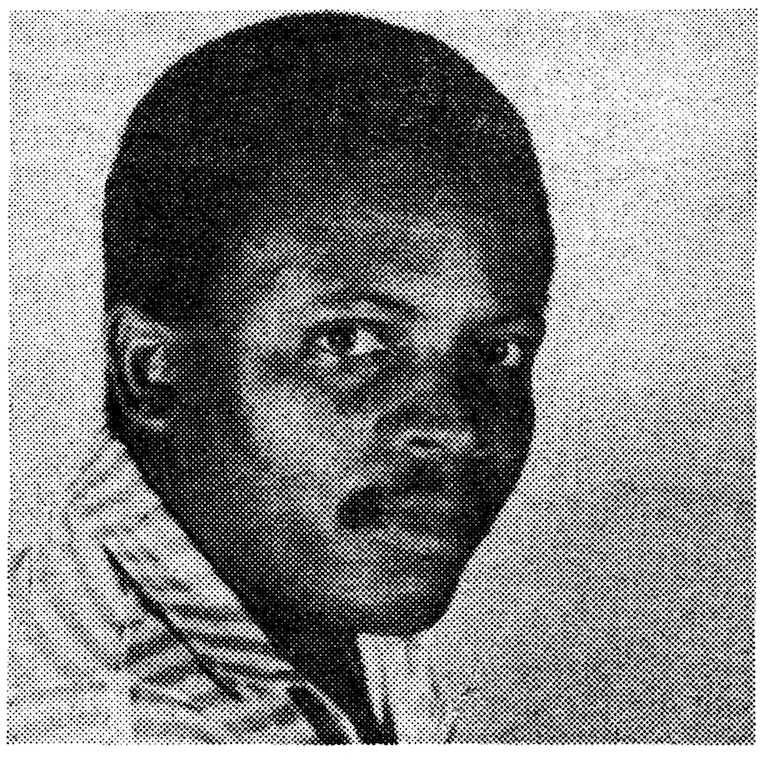 Wilfred Limonious in 1985.
The Star Newspaper / Gibbs Photo, courtesy the National Library of Jamaica / The Gleaner Company Limited
Wilfred Limonious in 1985.
The Star Newspaper / Gibbs Photo, courtesy the National Library of Jamaica / The Gleaner Company Limited
World-building is no minor thing. Only our most important artists have been able to imagine familiar and mystical topographies in their work — landscapes that, in their specificity, mirror our own. Like Toni Morrison’s sprawling Deep South or Gabriel Garcia Marquez’s allegorical Macondo, the art of late illustrator Wilfred Limonious awakens Jamaica's rich history and dancehall culture. Though Limonious began his career as a newspaper cartoonist in Kingston in the 1970s, it would be his work on seminal dancehall album covers — from Jah Thomas's Shoulder Move to Papa San's Animal Party — that would define the bulk of his métier. In time, Limonious’s album artwork became a kind of language, where recurring themes, colors, and subjects appeared and reappeared on different releases over the course of three decades. It was a world as real and as wondrous as the one he lived in.
The newly published In Fine Style: The Dancehall Art of Wilfred Limonious, released via One Love Books, captures and chronicles the illustrator's storied career in great detail. “Limonious was a true folk artist in his style, subject matter and use of patois,” Beth Lesser notes in the book’s foreword. And it’s true: few other Jamaican artists have established such an enduring national identity through their work. Below, writer Christopher Bateman — who began research for In Fine Style in 2008 and, over the next eight years, spent time with Limonious's family and friends — opens up about the outsized life and legend of Jamaica's most influential designer.
CHRISTOPHER BATEMAN: I used to play in a reggae band from Edmonton, and we’d tour across the country a couple of times a year. There was this record store in Toronto that doesn't exist anymore — S&W Soul King. Every time we played in Toronto, we would visit S&W and just dig for records there, learning more about reggae music and its different artists. That’s where I first saw a Wilfred Limonious cover. I remember walking into the store and, right away, it was the first record I saw — The Original Stalag 17-18 and 19. It was just really bright and crazy looking. I bought it on the strength of the cover.
That store was one of the places where I got to learn more about dancehall music. As I collected more and more dancehall records, and got more into that type of reggae, we’d just see Limonious record covers all the time. They really had a quality to them; you could always pick them out of a line-up. After a while, it became confusing to a number of my friends and I why there had not been a proper retrospective. We were always like, “Why is there no Limonious book?”
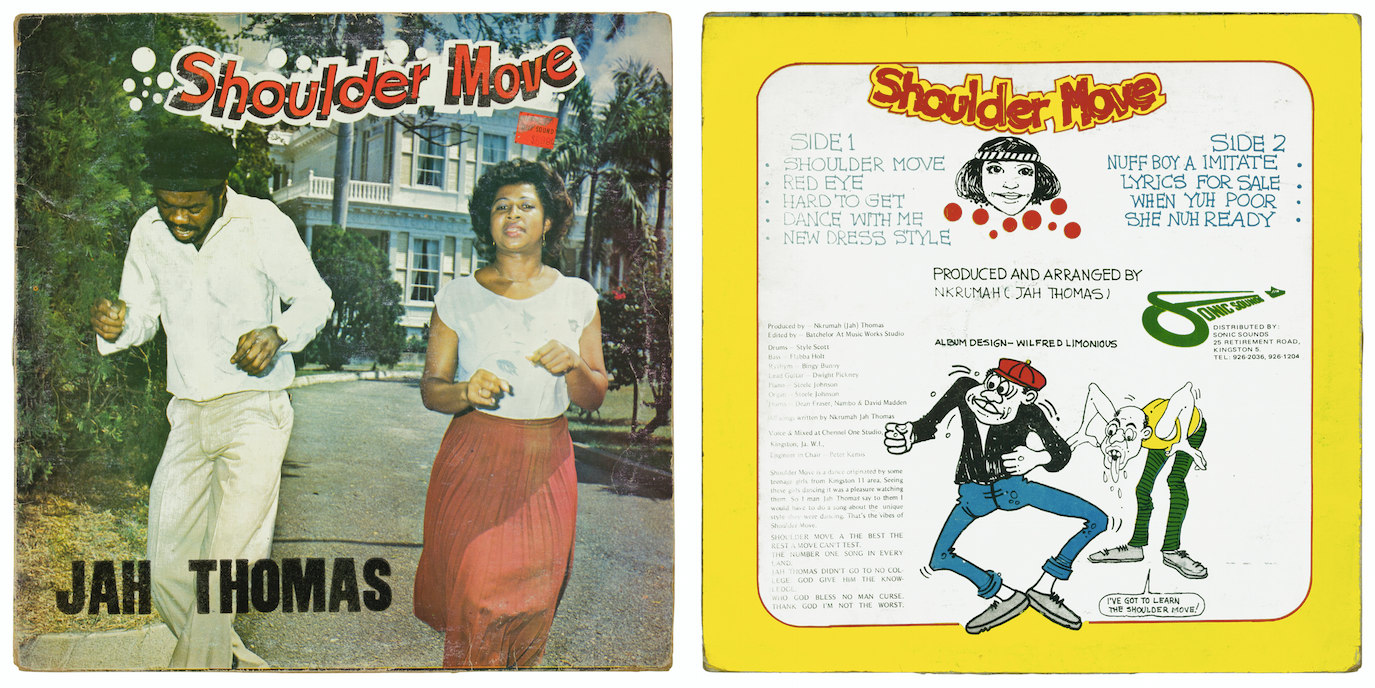 Shoulder Move by Jah Thomas (Midnight Rock, 1983). Printed by X-Press Litho in Kingston. This is believed to be the first album jacket designed by Limonious.
Shoulder Move by Jah Thomas (Midnight Rock, 1983). Printed by X-Press Litho in Kingston. This is believed to be the first album jacket designed by Limonious.
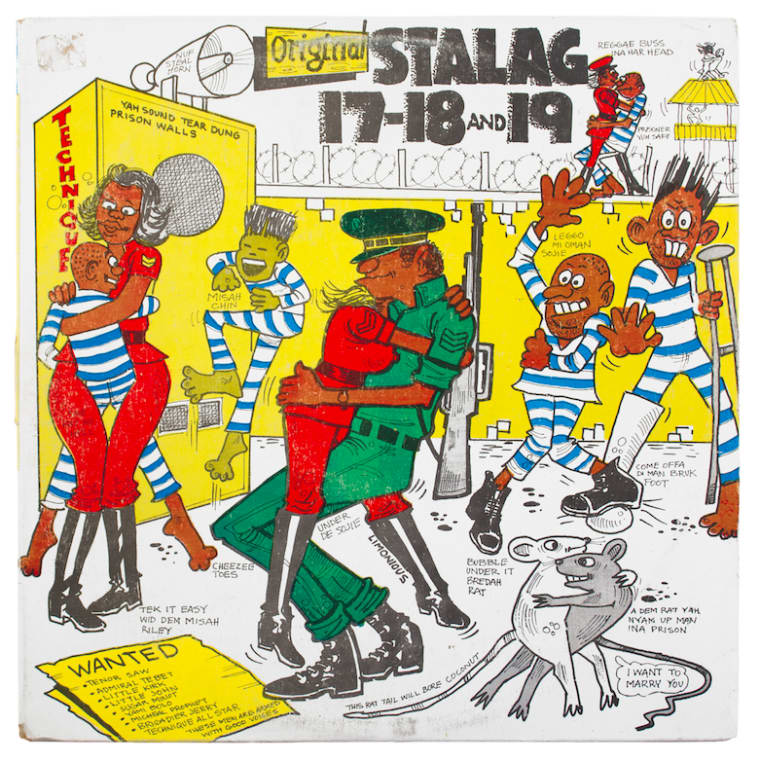 Original Stalag 17–18 and 19 by Various Artistes (Techniques, 1985).
Original Stalag 17–18 and 19 by Various Artistes (Techniques, 1985).
 Animal Party by Papa San (Scar Face Music, 1986).
Animal Party by Papa San (Scar Face Music, 1986).
In terms of color, Limonious used this technique: he would mock up an image using line drawings. And because they were usually cartoons, they were simple line drawings; there’s not a lot of shading. Then he would then head over to the printer with directions for how much percentage of color that should go in; usually it was like 100 percent red, 100 percent yellow, and like 60 percent magenta or something. He was all about straight color blocks within the lines. Instead of having gradual colors fading into one another — which might seem more subtle or abstract — it was just huge paint-by-number type colors. I don’t think I noticed this before we started designing the book, but we couldn’t get away from the yellow. When we were mocking up spreads, trying to decide which album covers should go next to each other, we noticed how he used yellow all over his covers. It seemed to be one of his favorite colors. And it's a nice color, too: bright and vibrant and soft all at the same time.
When I first got into my research, I was sort of new to dancehall. And dancehall music, to me, is just so different than the reggae that came before it. Limonious’s album covers were a perfect expression about the music that was illustrated on it. The music deals with everyday things, rather than what, for example, Bob Marley would’ve been dealing with, and his album covers were a mirror to that. They’re funny, but also deal with these sort of street themes, rather than more abstract things. It was like he was documenting the street. He had his ear to the ground.
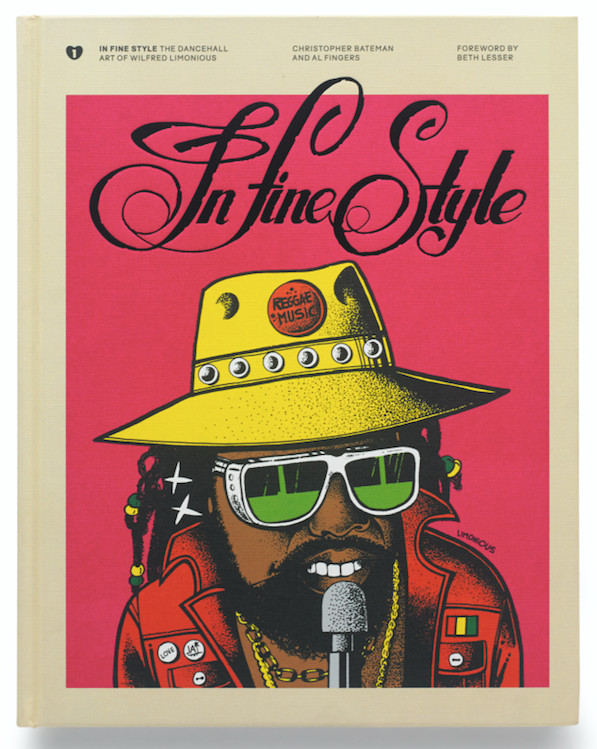 In Fine Style: The Dancehall Art of Wilfred Limonious (One Love Books, 2016).
In Fine Style: The Dancehall Art of Wilfred Limonious (One Love Books, 2016).
 In Fine Style: The Dancehall Art of Wilfred Limonious (One Love Books, 2016).
In Fine Style: The Dancehall Art of Wilfred Limonious (One Love Books, 2016).
Some of his best covers are Early B’s Ghost Busters and Papa San’s Animal Party — those are two really creative, funny, bizarre album covers. On Ghost Busters, Early B’s depicted with a stethoscope on him, as if he’s a doctor, and he's jamming a stake through a vampire's heart. There’s blood everywhere, and one guy’s face is in the foreground with a stake in his head; he's bleeding. It’s really stark and weird. Animal Party is cool; it’s just painting what the song is about. The song “Animal Party” by Papa San asks: “What if animals were into dancehall? What if animals were at the dance?” On the cover, there are lyrics with gorillas working the gate, giraffes working the bar, and Limonious just painted that. It’s so literal in how he painted the album cover. One of my favorite covers was Frankie Paul's Tidal Wave; it has a really nice back cover. There’s a huge tidal wave and a goofy caricature of Frankie Paul. I always appreciated how simple it was.
His career spanned about three decades, from 1970 to 1997, and he went through a phase of doing pretty standard newspaper cartoons early on — single frame or three frame drawings, and they were pretty set-up, punchline, Andy Capp or Hagar the Horrible-type jokes. But most of his early comics had no impact at all. Later, he worked for a literacy organization called JAMAL and he did illustrations for their easy English books. That was the period where he wasn’t doing cartoons. It was much more shaded pencil drawings and more realistic interpretations of historical events, stuff like that. There was less humor. After that, he transitioned into album covers, and that was where I feel like he was most comfortable, making these very funny caricatures of artists with lots of speech bubbles — highly imaginative covers. As he got later on in his career, he started to become a little more subtle, subdued, and somber with his pieces. There’s a section in the book called “Night Time Art,” where we feature a lot of his work that he worked on in the night. Limonious would work on cartoons by day for newspapers, and at night he would work on these really beautiful images, spanning dancehall and politics. He got a little more serious with his work as he got older.
The most fascinating thing for me was that despite his colorful, bold, loud album covers, he was a very quiet guy who kept to himself. I imagine he balanced himself out through his art.
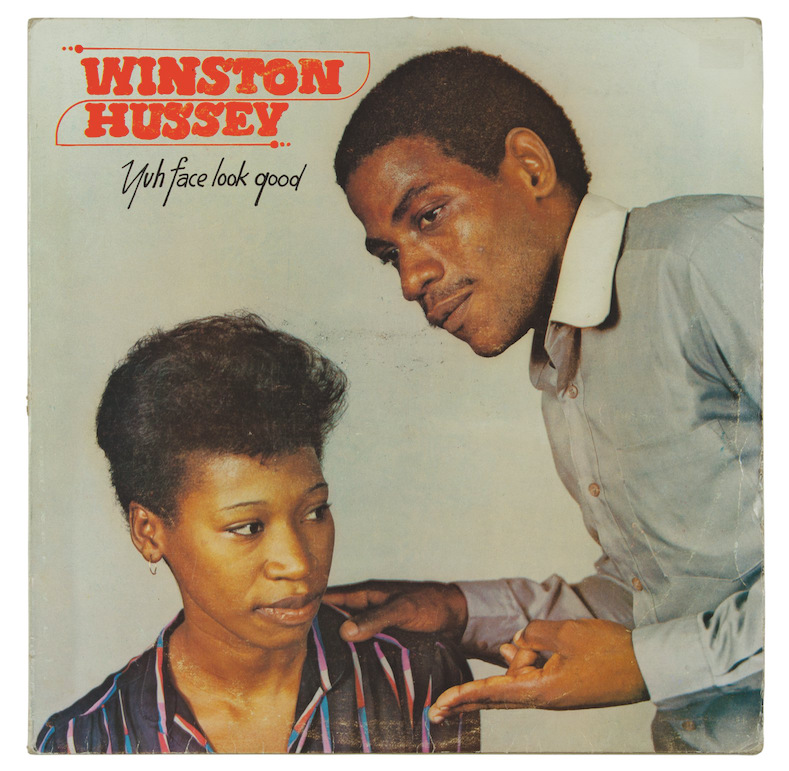 Yuh Face Look Good by Winston Hussey (Power House, 1985).
Yuh Face Look Good by Winston Hussey (Power House, 1985).